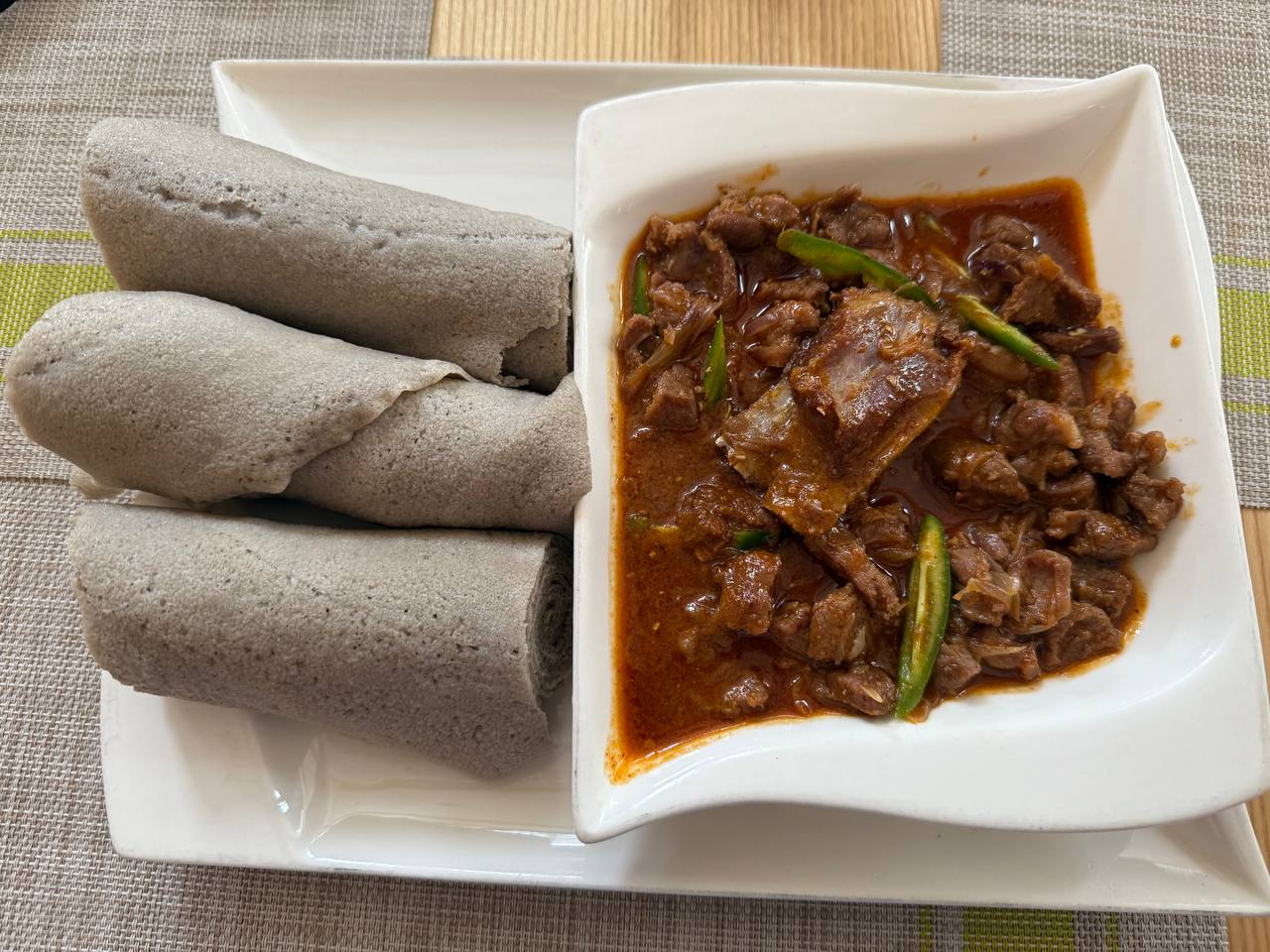If you have never eaten with your hands before, injera will change that. Forget knives, forks or even chopsticks. This is the original edible plate. Served in giant circles, soft but sour, it is the foundation of Ethiopian and Eritrean cuisine and an absolute game changer when it comes to communal dining!
So what is injera exactly? It is a fermented flatbread made from teff flour. Teff is a tiny ancient grain that has been grown in Ethiopia for thousands of years. When ground into flour and mixed with water, it creates a batter that sits out for a few days until it sours slightly.
That sour tang is what gives injera its signature taste. It is then poured in circles onto a flat clay surface or metal griddle and cooked on one side until bubbles form across the top. The result is something soft, spongy and just weirdly satisfying, well to me at least. Alas though and much like marmite you pretty much either love or hate injera.
How Is Injera Made?
Making injera is more like brewing beer than baking bread. You need time. You need fermentation. You need patience. The teff flour is mixed with water to make a smooth batter and left out for two to three days. Some people add a little starter from a previous batch to kick things off. By the end of day three it has a sour smell and a slightly fizzy texture. That means it is ready to go.
The batter is then ladled onto a big hot surface called a mitad. It cooks in seconds and you do not flip it. Just let the bubbles rise and pop. You end up with a flatbread that looks like a pancake but with more air pockets than a sponge. That is what makes it perfect for soaking up sauces and juices from the dishes it is served with.





Where Can You Find Injera?
Injera is everywhere in Ethiopia and Eritrea. It is breakfast lunch and dinner all in one. But thanks to huge Ethiopian communities abroad you can also find it in cities all over the world. Washington DC has one of the biggest Ethiopian diasporas on the planet and is packed with places serving huge platters of injera with spicy stews. London has a growing number of Ethiopian restaurants. Toronto, Stockholm, Frankfurt and even Melbourne have scenes of their own.
And thankfully for me at least there is even one on Street 172 in Phnom Penh that serves up a pretty decent Ethiopian meal.



Dishes That Go With Injera
Injera is nothing without the dishes that go on top of it. The real fun is tearing a piece off and using it to scoop up something hot spicy and full of flavour. There is doro wat which is a rich chicken stew loaded with berbere spice. There is sega wat which is basically the beef version and absolutely glorious. There is shiro which is a chickpea stew that vegetarians and carnivores both fall in love with. There is also gomen which is stewed greens and misir wat which is made with lentils.
You do not just get one of these either. A proper injera meal comes with a mix of meat and veg dishes all served directly on top of the bread. It is messy, its filling, and its built for a good bit of communal dining.




The Beauty of Eating With Injera
Eating with injera as mentioned is a real communal experience. There is no personal plate, with everyone just pretty much diving in with the bread to scoop up the meat and the sauces.
Injera makes you slow down. It is not fast food even if it is street food. You rip off a piece, you pick up a mouthful and then you go at it again. It is tactile and satisfying in a way that forks can never compete with.
Final Thoughts on Injera
So what is injera? It is one of the great flatbreads of the world. It is sour. It is soft. It is strong enough to carry a meal and gentle enough to mop up every last bit of sauce. It connects millions of people to their homeland and introduces newcomers to Ethiopian culture in the best way possible. Through food.
Whether you are eating it on the streets of Addis Ababa or in good old Phnom Penh then you really can’t go wrong with injera, unless of course you hate it, which some people do. At least though give this bad boy a try.

